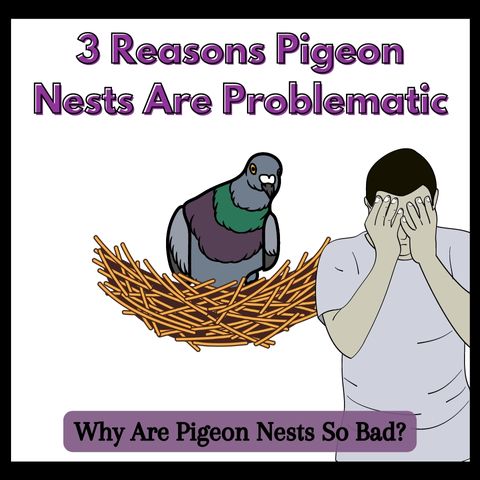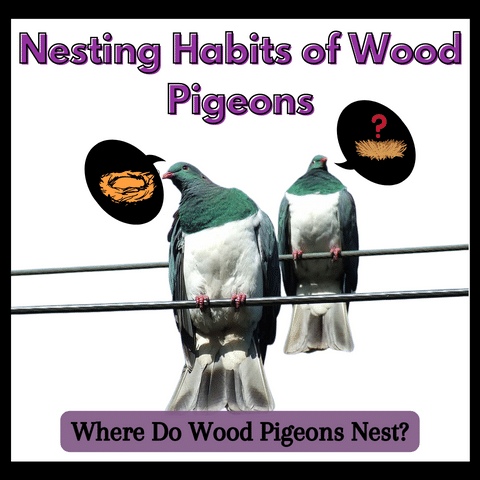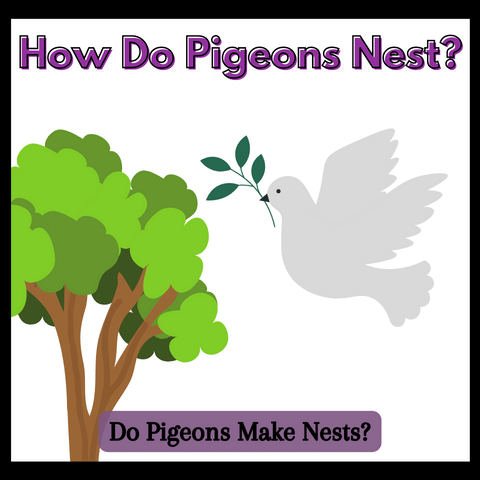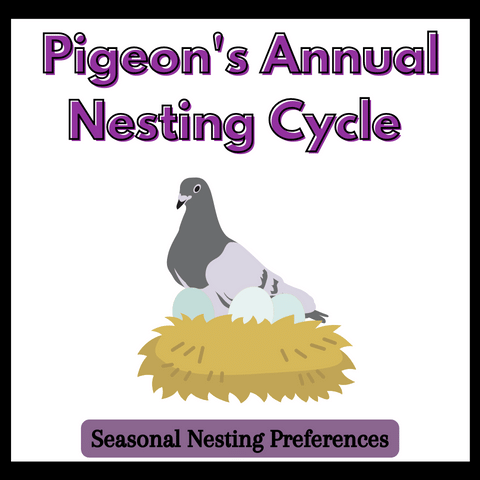Wood Pigeons Nesting Season: When Do Wood Pigeons Nest?
The distinctive cooing sounds and graceful flight of pigeons make them fascinating birds. However, when it comes to knowing about Wood Pigeons Nesting Season, you often wonder, ‘When Do Wood Pigeons Nest?’.
In this article, you will learn about the wood pigeon nesting season as well as explore when & where they feel their nest with reasons why. Throughout this article, we’ll share some valuable insights on wood pigeon nesting behavior & factors influencing it. But before I tell you what affects wood pigeon nesting behavior, let’s find out ‘when wood pigeons nest.’
When Do Wood Pigeons Nest?
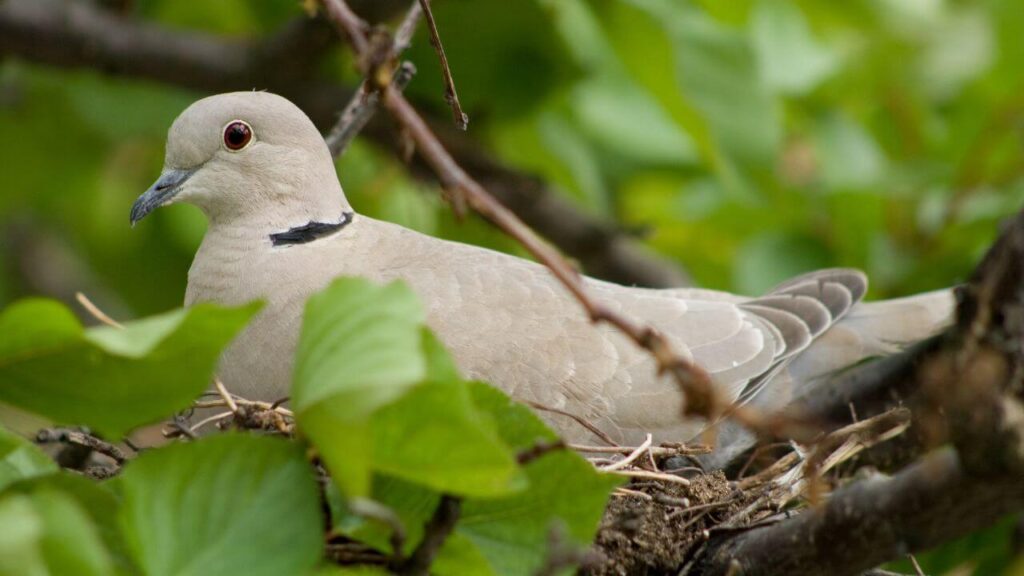
Wood pigeons are known to nest throughout the year but are more engaged in their nesting activity during the spring & summer months. The exact timing of their nesting can vary depending on the region & local climate. Wood pigeons in temperate regions usually nest from early spring to early autumn (April-August).
When they are in their nesting periods, the female lays one or two white eggs at a time while both parents take turns incubating it for around 17-19 days. After successful hatching, the chicks stay in the nest for 25-30 days. During that duration, their parents will feed them until they are grown up. You should also note that wood pigeons may raise multiple broods in a single nest.
They usually make their nest out of twigs, leaves & other materials found near trees, shrubs, or on ledges of buildings. You will also find wood pigeons nesting in dense foliage for protection and privacy for their breeds. Also, it is worth noting that the behavior of wood pigeons may also depend upon specific conditions & habitats. Suppose you have any specific wood pigeon in mind, like a regional subspecies or a different species entirely. In that case, it’s important to do your research because their nesting habits may vary slightly.
5 Key Points of Wood Pigeons Nesting Season
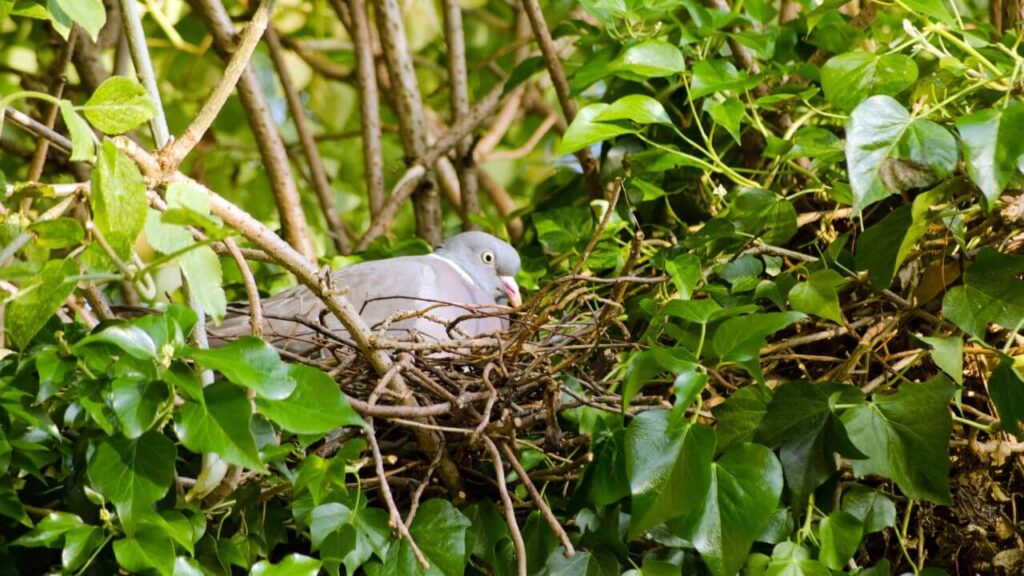
First, you should note that many factors, including the availability of resources and environmental cues, can influence the nesting behavior & the season of wood pigeons. We must understand the timing of the wood pigeon nesting season, particularly for proper research & conservation. After doing hours & hours of research and observing their nesting behavior, I gathered valuable insights into their population dynamics, breeding success rate, environment, and actions. But before I tell you all these things, let’s begin with learning some key points or facts worth exploring on the timing of the wood pigeon nesting season in more detail.
- Like wood pigeons, pigeons start their nesting activities in early spring, around March or April, when the weather is milder.
- You will find wood pigeons in the Northern region nesting slightly later than those in the Southern region, especially due to differences in resources & climate.
- The wood pigeon nesting season peaks during April & May, coinciding with abundant food sources.
- The actual wood pigeon nesting season may vary slightly depending on your location.
- Surprisingly, a pair of pigeons can have multiple broods in a single nest during the peak season.
Factors Influencing Wood Pigeons Nesting Behaviour
As I told you earlier, the wood pigeon nesting behavior may be influenced by several factors ranging from environmental conditions to reproductive considerations. Hence, below, you will find some factors to consider before determining the specific wood pigeon nesting season for successful broods.
Environmental Factors
Climate & Weather
First, the climate/weather will influence your pet’s nesting behavior. During my research, I found that sudden rainfalls in wood pigeon nesting behavior temperature fluctuations and other conditions that may interrupt or influence the wood pigeon nesting behavior. A study published in the Journal of Avian Biology found that wood pigeons may delay their nesting activity, especially in cold or wet periods, because these conditions may negatively impact the survival of their eggs and chicks.
Habitat Availability
Another thing that is worth considering is the availability of habitat. A wood pigeon may have to spend more than a week searching for suitable nesting habitat, which further plays a significant role in their nesting choices & behavior. As we (humans) progress, it continuously leads to urbanization, deforestation, and habitat segmentation. All these are hurting wildlife habitats and continuously reducing the nesting opportunities for our little avian friends ‘wood pigeons,’ further leading to a sudden decline in their populations.
Reproductive Factors
Breeding Age & Success
Another thing you need to consider is the pair’s age for successful breeding. In general, wood pigeons tend to reach sexual maturity at around one year of age. A study by the University found that older or more experienced wood pigeons will have higher breeding success rates than younger individuals & Fertility.
Another thing that you should note is the fact that wood pigeons are known to lay only one or two eggs per clutch but may lay three eggs occasionally, too. After reading various studies, I also learned that wood pigeon fertility can vary & depends upon the parental conditions and food availability, further influencing the clutch size and egg fertility.
Conservation & Management Considerations
Like many other bird species, wood pigeons face many challenges in their natural habitats. Below, I mention some considerations for effective conservation & management of wood pigeon populations.
Nesting Site Protection
Importance of Protecting Nesting Sites
Firstly, we must pay attention to maintaining a healthy wood pigeon population by preserving their nesting sites. A well-known study recently published in the Journal of Wildlife Management found that nesting site protection can further help ensure successful breeding & promote genetic diversity. Therefore, we should take our first step towards the protection & management of their natural nesting habitats to enhance the overall ecological balance.
Comparative Nesting Sites of Wood Pigeons
| Nesting Site | Preferred Tree Species | Preferred Shrubs | Suitable Buildings |
| Wooded areas | Oak, Ash, Pine | Holly, Ivy | – |
| Urban environments | Sycamore, Birch | Privet, Rose | Buildings with ledges |
| Parks and gardens | Apple, Cherry | Laurel, Forsythia | Chimney pots, eaves |
Conservation Measures
Also, another thing that you need to consider is the conservation measures. We should work towards implementing conservation measures like creating protected areas or establishing nesting platforms to promote the wood pigeon population & their long-term survival.
We should also pay attention to preserving the Woodland habitats, which are a favorite of wood pigeons. Therefore, let’s work & aim toward raising awareness among conservation organizations, local communities, and policymakers to put efforts into protecting the nesting sites of wood pigeons.
Citizen Science & Monitoring
Involvement of Birdwatchers & Researchers
It would help if you considered monitoring wood pigeon nesting behavior to gain and learn more data and insights. Many bird-watching societies have successfully involved volunteers in monitoring programs that further contribute to our understanding of the wood pigeon population. We must pay attention to long-term monitoring to track any changes in wood pigeon nesting pattern population trends and the effectiveness of conservation efforts.
5 Threats to Wood Pigeons’ Nesting Sites
| Threat | Impact |
| Urbanization | Loss of nesting sites due to construction and habitat destruction. |
| Deforestation | Reduction of suitable woodland habitats for nesting. |
| Predation | Increased risk to eggs and chicks from predators such as squirrels, corvids, and birds of prey. |
| Climate Change | Altered weather patterns and temperature fluctuations can affect breeding success and nesting site availability. |
Conclusion
I hope you have all the ideas around wood pigeon nesting seasons or ‘when do wood pigeons nest?’. After having a fascinating glimpse at wood pigeons’ nesting season & behavior, I hope you have no other concerns.
However, if you have any questions regarding ‘Where Do Wood Pigeons Nest?‘, never mind dropping a comment below and understanding when & where wood pigeon nests will contribute to understanding their further behavior, population dynamics, & conservation requirements, therefore, make sure that you also consider factors like climate habitat, availability, & reproductive consideration to make an informed decision and determine the specific pigeon nesting season in your location & climate conditions.
I hope I have given you all the information about the wood pigeon nesting season. If you find this article helpful, then consider sharing it. Do check my other helpful guide on wood pigeon care & management. See you in the next post. Till then, take care and goodbye.

